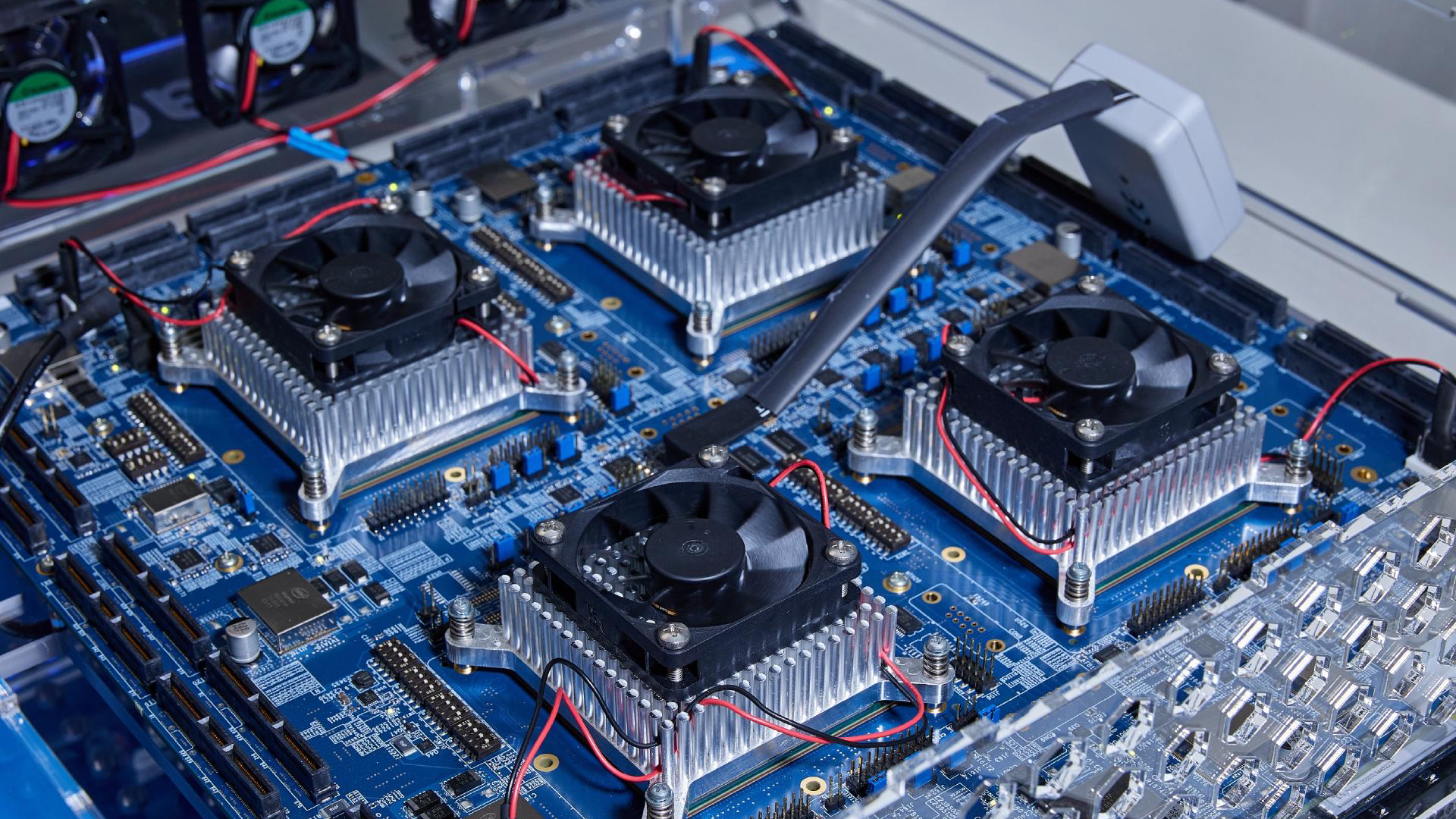Tachyum's 'general-purpose' Prodigy chip delayed again — now with 256 cores per chiplet and a $500 million purchase order from EU investor
Commercial shipments probably won't happen until sometime in 2027

Tachyum broke the silence Wednesday about its Prodigy universal processor for AI and HPC, announcing plans to boost the number of its cores to increase performance.
The company also said it closed its Series C financing round with $220 million from a European investor, and inked a $500 million purchase order for Prodigy with that same investor. Finally, the company disclosed that its Prodigy processor has not been taped out and its final specification has not been frozen, suggesting that the unit is years away from mass production.
256 cores per chiplet
The biggest news is that Tachyum's Prodigy processor will adopt a multi-chiplet design and each compute chiplet within that system-in-package (SiP) will feature 256 universal cores (up from 192 cores earlier this year, and from 128 cores initially). This suggests that the whole SiP will offer significantly more cores to fulfill the company's promise of '3X the performance of the highest-performing x86 processors, and 6X the performance of the highest-performing GPGPU for HPC.' There is a problem with this performance promise, however: the company still has not frozen specification of the CPU and, consequently, has not taped out the chip, so its actual performance remains to be seen.
"With the capital raised from this latest funding round, we are able to get complete Prodigy tape-out with the latest innovations and designs to meet ever-changing market demands," said Dr. Radoslav Danilak, founder and CEO of Tachyum.
Tachyum will use the proceeds from its Series C financing round to finance finalizing the tape-out process and schedule. Tachyum intends to disclose 'upgraded specifications and performance' of its processor shortly — it hasn't revealed when, exactly, but we can make an educated guess that it will happen sometime in 2027.
Commercial shipments will probably start in 2027
Once funding is received (expected within a month), Tachyum can finalize RTL and physical design — assuming it does not add anything to it, run final validation, and tape out the Prodigy chip. Because Prodigy is expected to be made with TSMC's 5nm-class process technology, Tachyum will get the first silicon in 4 – 4.5 months (depending on how complex the design is, and how lucky the company is after sending in the GDSII file to its production partner — as it will take 1 – 1.5 months to write photomasks and then around three months to build the first wafer / wafers). If Tachyum submits its GDSII file to its manufacturer on Nov. 1, 2025, it will get its silicon in Feb. or March 2026.
After laying their hands on the silicon, Tachyum engineers will bring up and validate the design to ensure that it functions as intended, and then tune firmware. If the chip works as planned, the process will be complete in six to seven months — sometime in Aug. 2026 (at the earliest), or Oct. 2026 if we're being conservative. Once engineering samples meet target specifications, Tachyum can supply them to early customers and partners receive for their evaluation and validation, which might take another 2 - 3 months. If everyone is happy with these samples, Tachyum will likely initiate mass production of its Prodigy in early 2027.
If everything is fine with production ramp of the Prodigy processor, commercial shipments could begin in mid-2027. This timing aligns with Tachyum's mention of a potential IPO in 2027 — likely planned to coincide with the initial revenue from Prodigy.
If Tachyum manages to release its Prodigy CPUs commercially in 2027, this will be the longest-developed processor in recent times — its development will have taken about 10 years. Prodigy was initially targeted for tape-out in 2019 and launch in 2020, but the schedule slipped repeatedly: first to 2021, then to 2022, 2023, 2024, 2025, and, now, the company is looking forward to get the first samples of its chip in 2026. But the company is still optimistic about its development despite these setbacks.
"We are seeing how the battle for AI supremacy is currently being waged and we are excited to bring to market a disruptive chip that will enable AI models with parameters many orders of magnitude larger than the synapses of the human brain at an affordable price at a fraction of cost of existing solutions," said Danilak.

Follow Tom's Hardware on Google News, or add us as a preferred source, to get our latest news, analysis, & reviews in your feeds.
Get Tom's Hardware's best news and in-depth reviews, straight to your inbox.

Anton Shilov is a contributing writer at Tom’s Hardware. Over the past couple of decades, he has covered everything from CPUs and GPUs to supercomputers and from modern process technologies and latest fab tools to high-tech industry trends.
-
Findecanor More innovation in CPU architecture is a good thing. But I wonder how innovative it really is. They overhauled the architecture a few years ago, turning it back from a semi-statically scheduled architecture to a more traditional OoO design.Reply
And then, what would really differentiate it from what could be achieved with a RISC-V with custom extensions? (like what half a dozen other startups are doing)
I wonder when they are going to make any documentation of the ISA freely available.
As a nerd in these things, I am eager to read it. -
jp7189 This processor was originally announced with a release date of 2020. With every delay comes increased boasts of too good to be true performance. What have these guys shown that is compelling enough to continue to recieve funding?Reply -
bit_user Reply
LOL, they're selling excuses! Very expensive excuses.jp7189 said:This processor was originally announced with a release date of 2020. With every delay comes increased boasts of too good to be true performance. What have these guys shown that is compelling enough to continue to recieve funding?
I think they updated performance claims are probably little more than taking their original claims and updating them according to the next node they're trying to use. Sadly for them, each node is more expensive than the last, and so their costs should be spiraling each time they start over and port their chip to an even newer node.
IMO, they really need to ship something. Since they have government and EU support, it doesn't even have to be the fastest thing out there. It just needs to ship, so they can have something to work with and learn things about how it functions in the real world and with real workloads.
I always said it would be hard for them to outrun the big boys. This whole, sad saga gives me more respect for groups like the one in Fujitsu, who made a CPU with custom ARM cores and was the first to implement SVE. As impressive as it was, it didn't try to be everything to everyone, though. And by utilizing ARM's existing ISA, they saved themselves a ton of work on toolchain and porting of software.